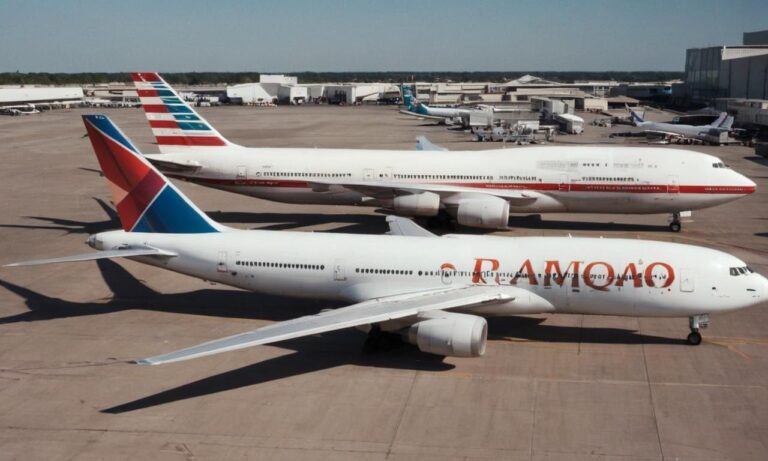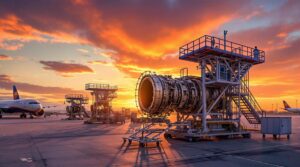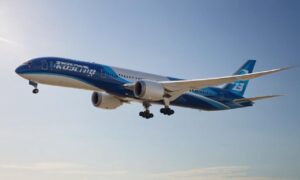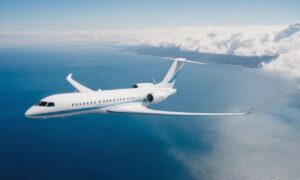When it comes to the world of aviation, the comparison between different aircraft models is a topic of great interest and curiosity. One such comparison that often arises is whether a Boeing 777 is bigger than a 747. In this article, we will delve into the dimensions, capabilities, and key features of these two iconic Boeing aircraft to provide a comprehensive answer to this intriguing question.
The Boeing 777: Unveiling its Dimensions
The Boeing 777, also known as the “Triple Seven,” is a long-range, wide-body twin-engine jet airliner. Introduced in the mid-1990s, this aircraft was designed to set new standards for comfort and efficiency. When it comes to size, the Boeing 777 comes in various models, each with its own specifications. Generally, the length of a Boeing 777 can range from approximately 199 to 242 feet.
Additionally, the wingspan of the Boeing 777 is another crucial factor. With a wingspan that typically ranges from 199 to 213 feet, the aircraft’s wings are designed for optimal aerodynamic performance and fuel efficiency.
The Boeing 747: A Legend in the Skies
The Boeing 747, often referred to as the “Queen of the Skies,” is a long-range, wide-body, four-engine jet airliner. It has been an aviation icon since its introduction in the early 1970s. The Boeing 747 is renowned for its distinctive hump-shaped upper deck, which houses the cockpit and gives the aircraft its unmistakable appearance.
When it comes to size, the Boeing 747 is generally larger than the Boeing 777. The length of a Boeing 747 typically ranges from around 184 to 250 feet, making it longer than many variants of the Boeing 777.
Comparing the Giants: Size Matters
Now that we have a basic understanding of the dimensions of both the Boeing 777 and the Boeing 747, we can assert that, in general, the Boeing 747 is indeed bigger than the Boeing 777. The Queen of the Skies holds the advantage in terms of length, thanks in part to its iconic upper deck.
However, it’s important to note that size isn’t the only factor that determines the superiority of an aircraft. The Boeing 777 and 747 serve different purposes within the aviation industry. The Triple Seven is often chosen for its fuel efficiency and long-range capabilities, while the 747 is favored for its larger passenger capacity.
Conclusion: Choosing Between Legends
In conclusion, the comparison between a Boeing 777 and a 747 boils down to the specific needs and preferences of airlines. While the 747 may hold the title of being physically larger, the Boeing 777 has its own set of advantages that make it a popular choice for modern long-haul flights.
Whether it’s the sleek design of the Boeing 777 or the iconic presence of the Boeing 747, both aircraft continue to capture the imagination of aviation enthusiasts worldwide. Ultimately, the choice between these two legends depends on the unique requirements of the airline and the nature of the routes they operate.
Exploring Engine Configurations
Another critical aspect to consider when comparing the Boeing 777 and the 747 is their engine configurations. The Boeing 777 typically features two powerful engines, known for their fuel efficiency and performance. In contrast, the Boeing 747, being a quad-engine aircraft, has a different engine setup that contributes to its distinct capabilities.
Boeing 777 Engine Efficiency
The twin-engine setup of the Boeing 777 not only enhances fuel efficiency but also plays a crucial role in reducing operating costs. Airlines often appreciate the balance between power and economy that these engines provide, making the Boeing 777 an economical choice for long-haul flights.
Boeing 747 Quad-Engine Power
With its four-engine configuration, the Boeing 747 is known for its robust power, allowing it to carry heavy loads over long distances. This engine setup contributes to the aircraft’s ability to handle larger passenger capacities and freight, making it a versatile option for various airline needs.
Interior Layout and Passenger Experience
Delving into the passenger experience, the interior layout of both the Boeing 777 and the 747 plays a significant role in attracting airlines and passengers alike. Airlines often consider factors such as cabin design, seating arrangements, and in-flight amenities when choosing between these two aircraft models.
Boeing 777 Comfort and Design
The Boeing 777 is celebrated for its spacious and well-designed interiors, providing passengers with a comfortable travel experience. Airlines often prioritize passenger comfort, and the Boeing 777’s interior layout, coupled with its modern design, contributes to a positive in-flight atmosphere.
Boeing 747 Iconic Upper Deck Experience
One of the distinguishing features of the Boeing 747 is its iconic upper deck, which not only gives the aircraft a unique appearance but also offers a special in-flight experience. Airlines may opt for the Boeing 747 to provide passengers with a sense of exclusivity and luxury associated with the upper deck.
Frequently Asked Questions
As we navigate the intricacies of comparing the Boeing 777 and the 747, let’s address some frequently asked questions to provide a more comprehensive understanding of these aviation giants.
| Question | Answer |
|---|---|
| 1. Which aircraft is more fuel-efficient? | The Boeing 777 is generally more fuel-efficient due to its twin-engine configuration, contributing to lower operating costs. |
| 2. Can the Boeing 747 match the range of the Boeing 777? | While the Boeing 747 has an impressive range, the Boeing 777 is often preferred for ultra-long-haul flights, thanks to its fuel efficiency and design. |
| 3. Are there variations in the upper deck layout of the Boeing 747? | Yes, airlines have the flexibility to customize the upper deck of the Boeing 747, offering different layouts and amenities. |






